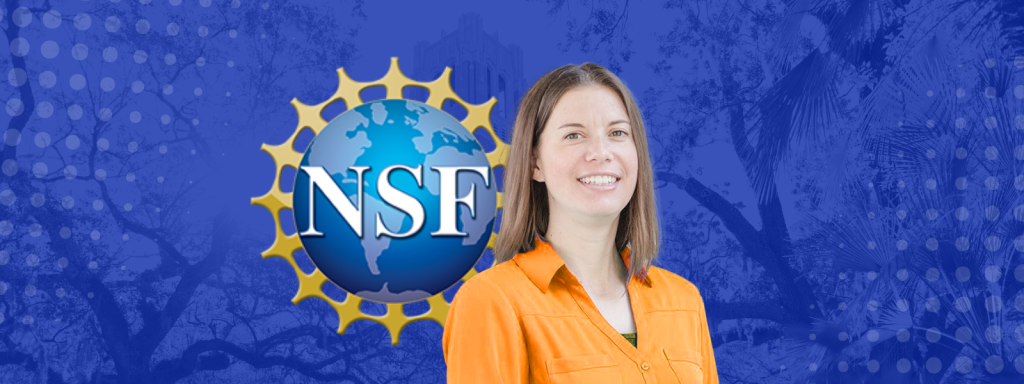
UF MAE professor Dr. Jessica Allen recently submitted a proposal that won her a CAREER Award from the National Science Foundation. The NSF presents this award to early-career faculty who “serve as academic role models in research and education and lead advances in the mission of their department or organization.” It is the most prestigious award presented by the NSF, and comes with a five-year federal research grant.
Allen’s proposal was centered on developing better computational models for simulating gait rehabilitation. The computational modeling approach that Allen and her lab use is referred to as neuromechanical modeling, as it focuses on modeling the interactions between the nervous system and the “mechanical” system of muscles and bones. These models could allow for clinical simulations of certain rehab procedures or prosthetic devices on digital versions of patients, so that decisions can be made without having to actually test on that person.
“They hold a lot of promise to be implemented into clinical settings as a digital twin of an individual to improve rehabilitation design and prescription,” Allen said. “But the current state of the art is that the process of actually simulating rehabilitation is not very good, and that’s what we’re trying to improve.”
She explained that specifically, the existing optimization approach needs improvement. An optimization approach is essentially a method of identifying a problem and suggesting a target to aim for. For example, a stroke victim who has lost control of muscles in their legs could aim to optimize their balance and walking ability as suggested by a simulation.
“If you think about humans, they’re very complex robots. Instead of having a motor at each joint, they have muscles, and that provides slight complications to how you might model it,” she said. “You have many, many muscles, but only a few joints, and so you have to learn how to control all those muscles to achieve whatever your goal is.”
However, current optimizations used in neuromechanical simulations are limited because they don’t simulate adaptation during rehabilitation or take into account qualities of each individual’s nervous system that may limit this adaptation.
“Current approaches only tell us, ‘If I could turn all of the dials in this body, this is what you would be able to do.’ So it doesn’t necessarily account for what a person can actually do, and it doesn’t model that trajectory over time,” Allen said. “What we want to do is model the rehab process over time and implement qualities of an individual subject that might influence how that trajectory might occur. The current state of the art might predict that they can totally walk normally after rehab, but given their current state, what is an actual realistic outcome?”
She said that the ultimate goal would be to use this award money to continue developing models that would eventually be used in real-world clinical applications.
“The motivation is to try to get this eventually into something that is feasible to help clinicians with rehab prescriptions or to help engineers develop better devices for rehab, and in a way that is accepted by clinicians and by patients,” she said. “It’s fun to do this stuff, but we don’t want to just have our stuff happen on our computer, we do want it to make its way out into the world. One of the things that we’re trying to do with this award is find out from clinicians what they need to know or see from these to provide confidence. And then, what do patients need to know to be comfortable with a computer playing a role in their rehab process.”
Allen noted that good communication between collaborators will be crucial as a key to reach that desired result.
“A lot of times, especially as engineers, we are prone to sitting in our silo. We may interact some with our clinical collaborators, but not quite enough, and so just providing opportunities to have more collisions and meaningful conversations, meaningful collaborations, and meaningful input going both ways I think will help a lot,” she said.
Ultimately, Allen sees a bright future for this project and is eager to use this award and UF’s outstanding resources to make an impact and bring positive change to the field of neuromechanical modeling.
“I’m optimistic. This is a project that I’m really excited about; I’ve been thinking about doing this for a long time,” she said. “I’ve only been at UF for a year and a half, and moving to UF, with the people around as well as all the computational resources, the clinical nearness, I knew that it was going to enhance the feasibility for my group to be able to do these types of problems.”
